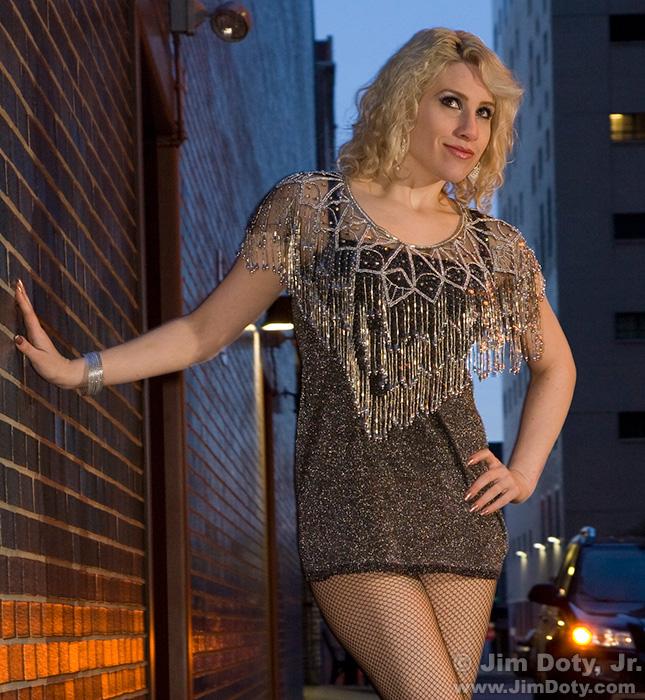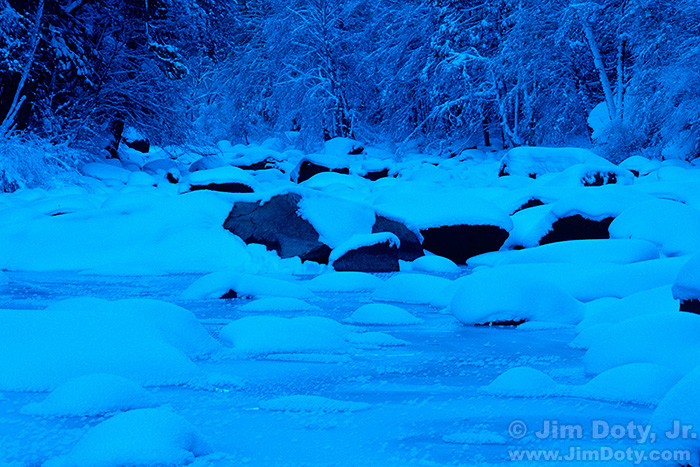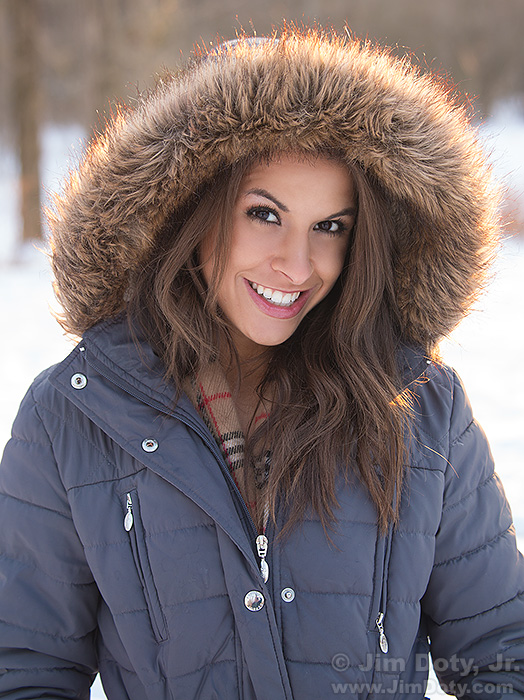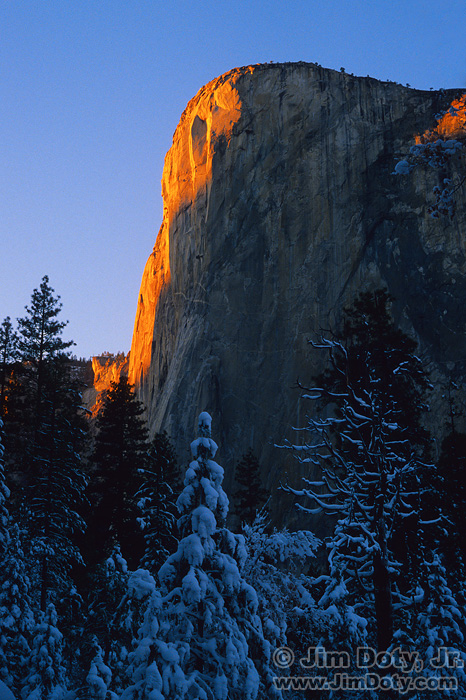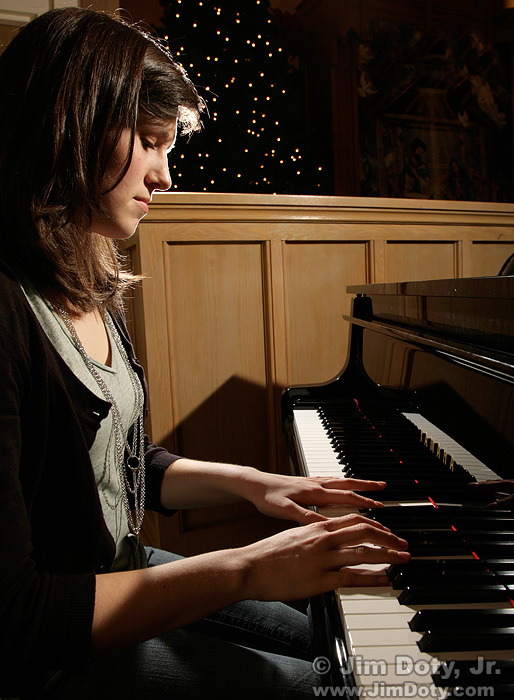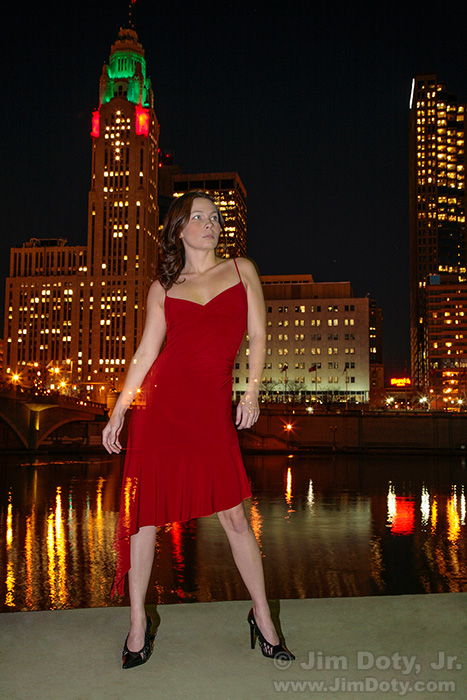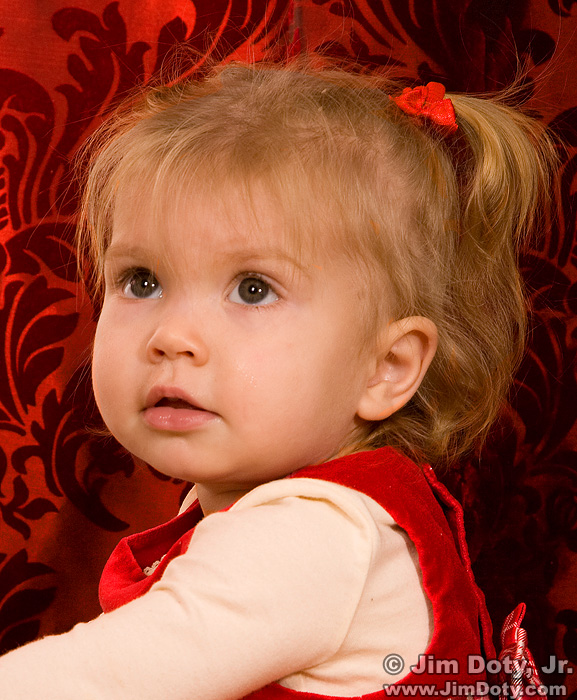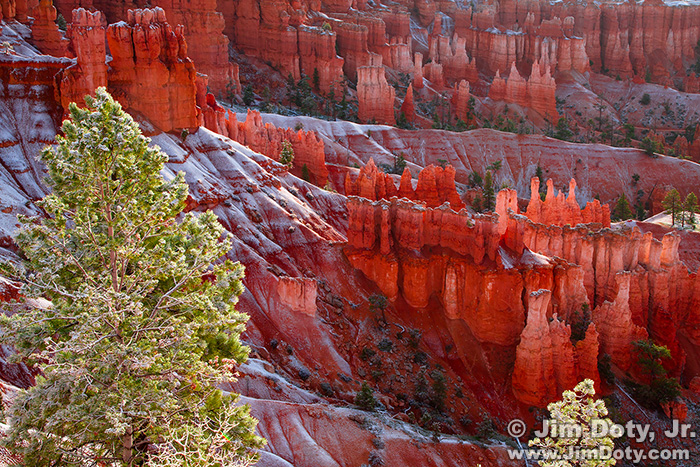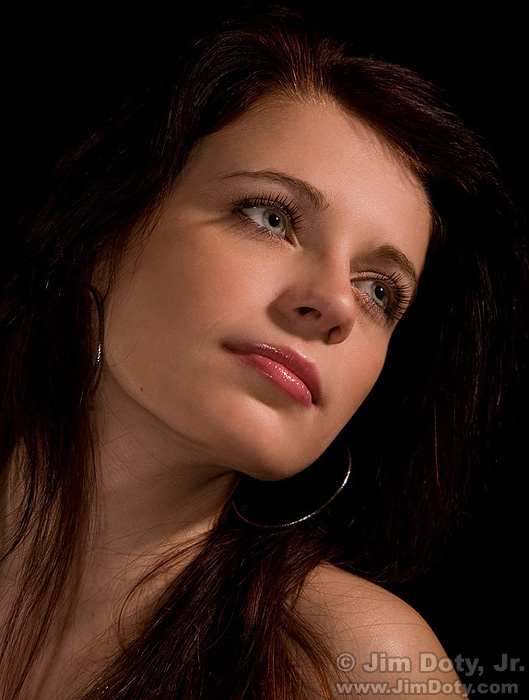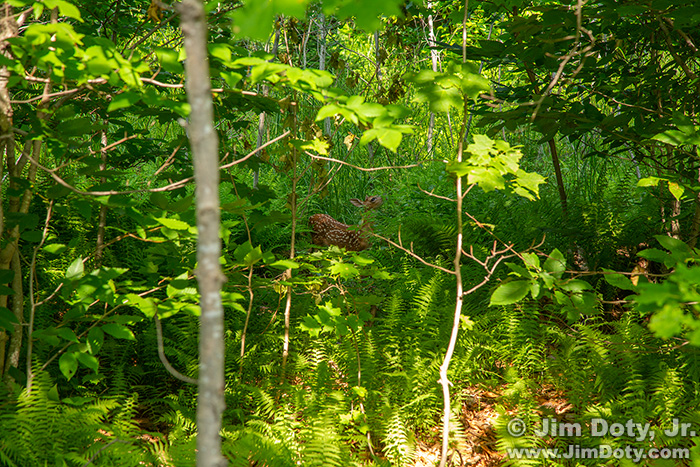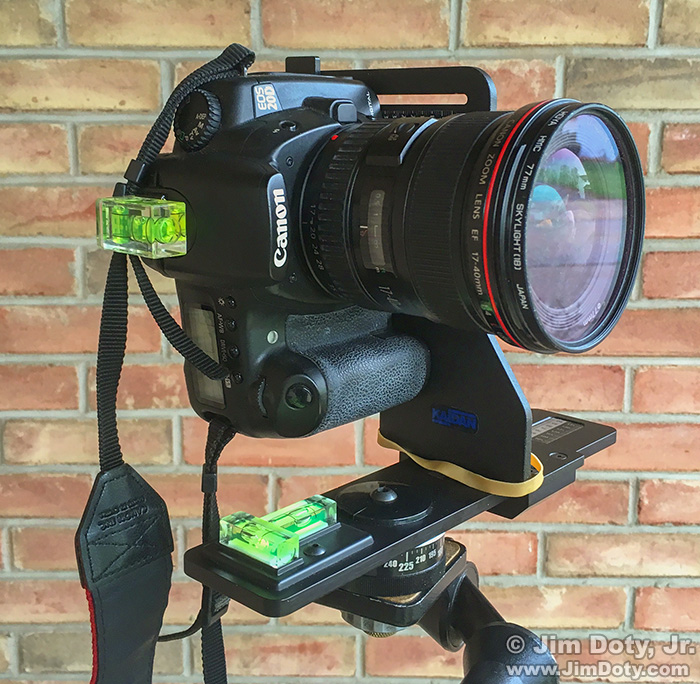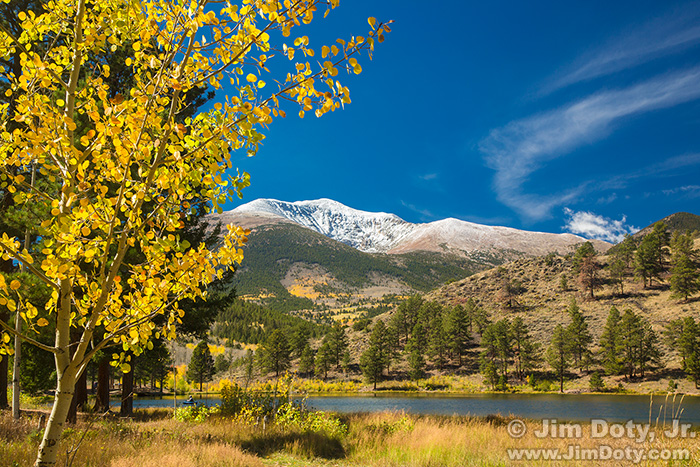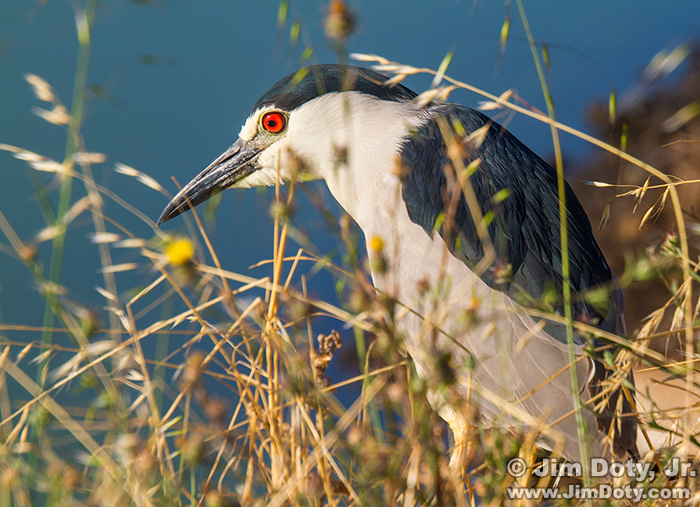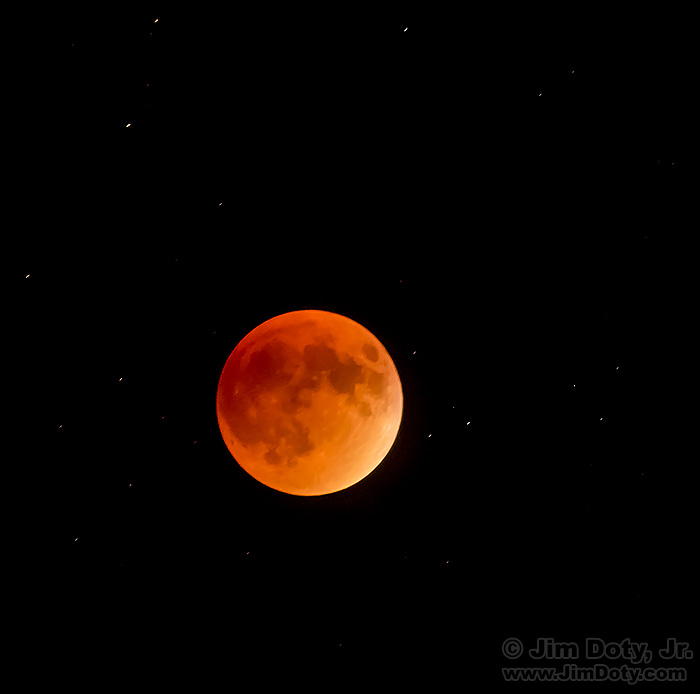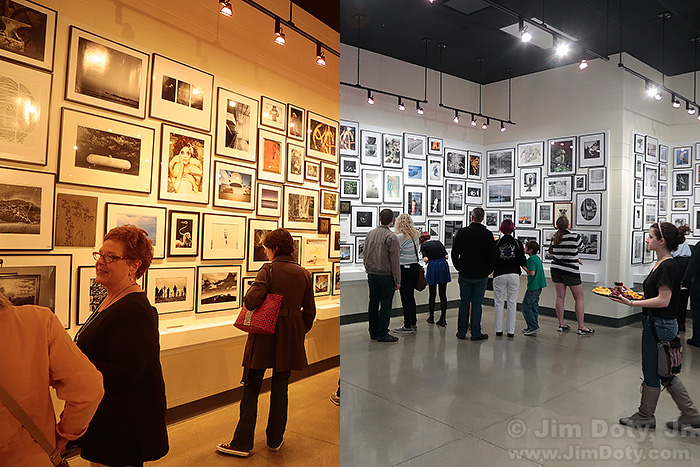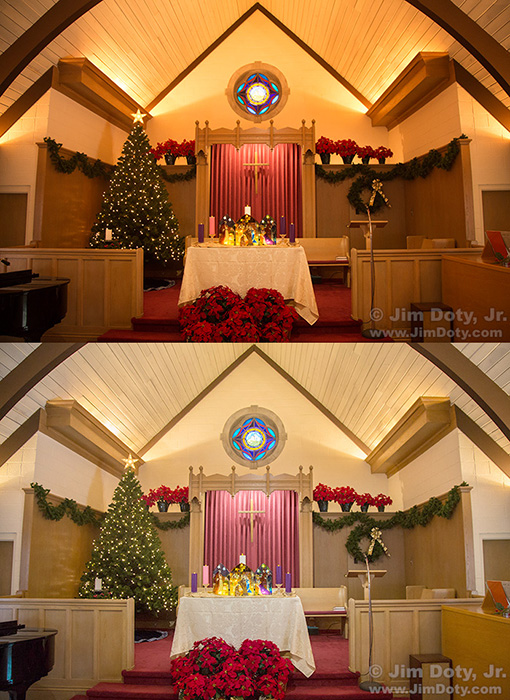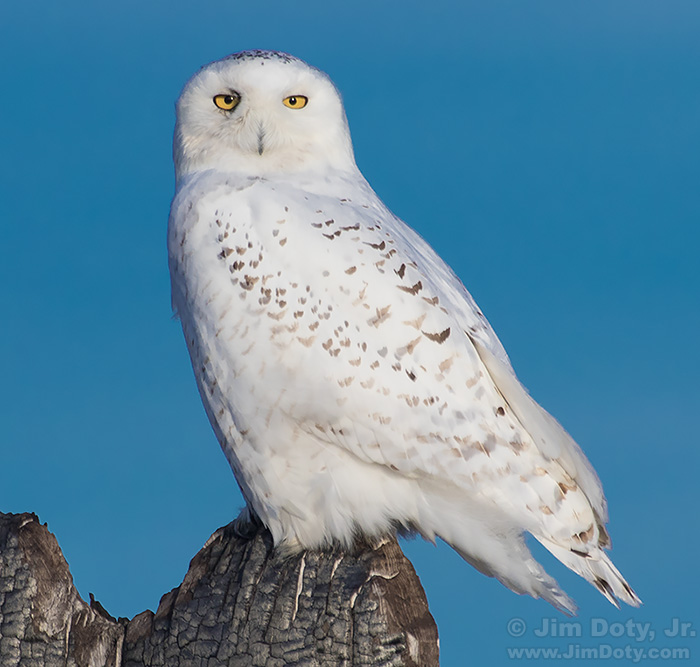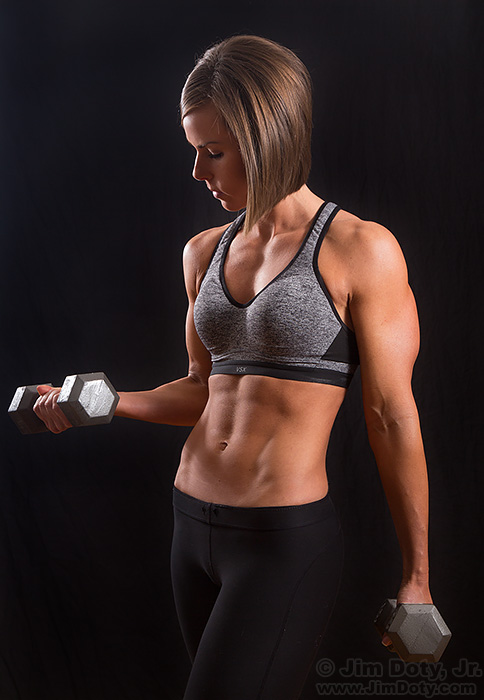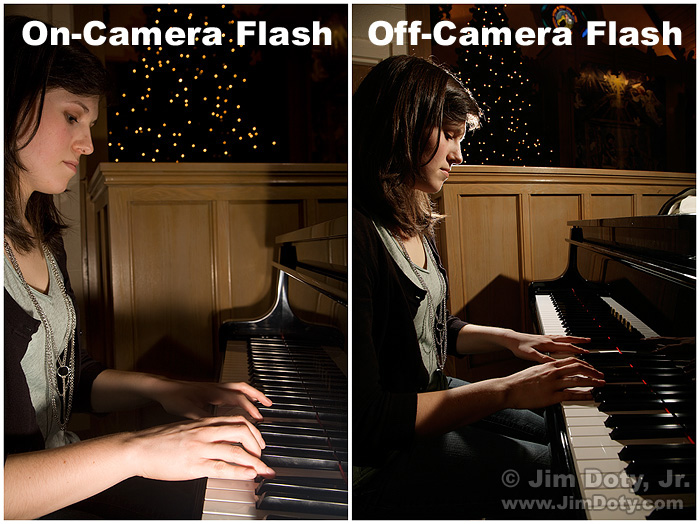You would think a windchill of 4° Fahrenheit (-16°C) would be too cold for a photo shoot, but not with some models. We booked this January shoot weeks in advance so we knew it would be cold, but we had no idea how cold until the day arrived. Here’s the story behind this image and how to work with a model when it is so cold.
Category Archives: Using Equipment
Metering Nighttime Winter Scenes
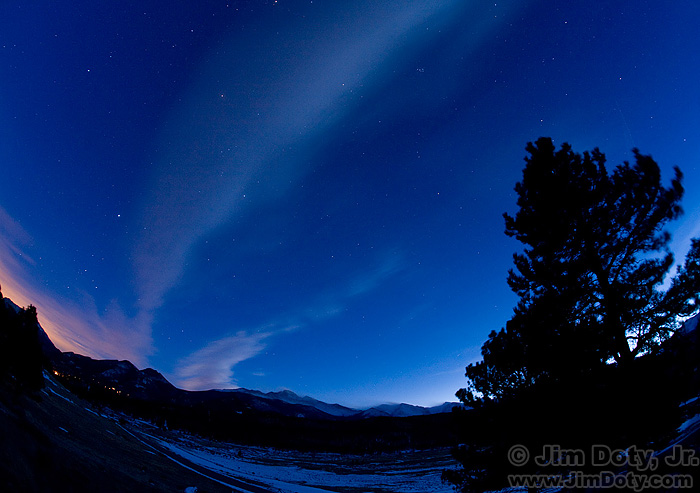
Twilight, Rocky Mountain National Park. Sirius, Canis Major, Orion, Taurus, the Hyades star cluster, and the Pleiades star cluster are all visible in the fading light. Click for a larger version.
You can photograph the night sky year around, but winter brings an added bonus: SNOW! When you don’t have the benefit of moonlight, most of the year land forms a dark to black silhouetted skyline against the night sky. In winter you have the possibility of including the highly reflective snow. You can see both in this photo. Any place not covered with snow is very dark to black. Having reflective snow is why winter is the favorite time of year for a lot of photographers to go out and photograph the night sky.
Metering Evening Winter Scenes
Just like metering daytime winter scenes, the key to metering evening winter scenes is knowing what to meter and deciding how much exposure compensation to use.
Metering People in the Snow
The white snow in a winter scene can and often does fool a camera meter into underexposing a portrait, so here are the steps to take to get the right exposure. I throw in a few portrait suggestions too.
“How To†Series: Winter Photography
In addition to all of the usual photographic challenges, winter provides some extra complications, especially in terms of metering. So I began this series of articles on winter photography. Check out the links below. The articles will help you meet the unique challenges of winter photography. So get out there, have fun, and create some great winter images!
How to See and Photograph The Quadrantid Meteor Shower Tonight
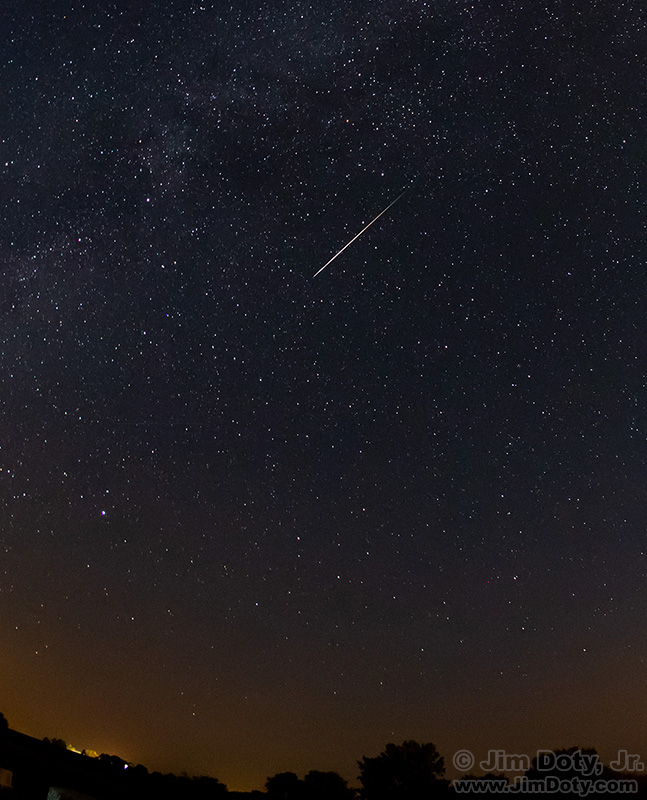
Perseid Meteor photographed from Rose Hill Cemetery west of Lamoni, Iowa. 4:55 am CDT, August 13, 2018.
Tonight (January 3-4) is the night of the Quandrantid Meteor Shower. This article will tell you what you need to know to see and photograph the first meteor shower of 2019. Predictions are always just estimates, but this shower is predicted to produce about 25 meteors per hour. Best of all, this will be a dark sky night without interference from the moon.
Favorite Photo, December 20
This photograph was spur of the moment. Jennifer played the piano at church for a Sunday morning service and I decided after church that I wanted a photo of her playing the piano.
Metering People in the Snow
The white snow in a winter scene can and often does fool a camera meter into underexposing a portrait, so here are the steps to take to get the right exposure. I throw in a few portrait suggestions too.
How To Work With A Model When The Windchill is 4°
You would think a windchill of 4° Fahrenheit (-16°C) would be too cold for a photo shoot, but not with some models. We booked this January shoot weeks in advance so we knew it would be cold, but we had no idea how cold until the day arrived. Here’s the story behind this image and how to work with a model when it is so cold.
Handheld Panos: Sometimes You Get Lucky

Kroger Panorama. Graceland Shopping Center, Columbus Ohio. November 12, 2013. Click for a larger version.
I’ve done a lot of commercial panoramas for clients as diverse as KOA Campgrounds and Crown Plaza Hotels. When I am on a commercial assignment I follow all the right steps and use all the right equipment. For the Kroger pano above I did everything right.
But there are times when you are doing your own thing and decide at the last minute you want to try a pano. You might get lucky trying to do a handheld panorama. I will tell you how to increase your odds of getting a good handheld pano.
How to Photograph a Meteor Shower

Perseid Meteor photographed from Rose Hill Cemetery west of Lamoni, Iowa. 4:55 am CDT, August 13, 2018. Cropped from the original image.
Tonight (Dec 13-14) is the night of the Geminid Meteor Shower. This article will tell you what you need to know to photograph what should be the best meteor shower of 2018.
Favorite Photo, December 13
In my “favorite photos” folder, all of my favorite photos for December 13 are from photo shoots with Sarah and Lela Rae, two of my favorite models to work with.
Favorite Photo, November 30
This photo has special memories for me, which is why it is my favorite photo for today’s date. It is one of my all time favorite portraits.
How To Protect Your Camera Gear in the Cold and Snow
Cold and snow can cause a lot of damage to your camera gear. Something as simple as taking pictures outside and then bringing your camera inside your house or car can cause hidden damage that won’t show up until days or weeks later. The simple steps in this article could save you hundreds of dollars in repair bills.
“How To†Series: Off-Camera Flash
Twelve articles (links below) to get you started with off-camera flash. The equipment you will need and how to use it.
Getting your flash off the camera opens up a whole new world of photographic possibilities. And the really good news: the equipment is way less expensive than it used to be. If you are ready to get started, I just finished writing (or re-writing) a series of articles on off-camera flash that covers the equipment you will need and shows you how to use it.
Secrets of Great Color: Set Your Camera To Bland!
Tahquamenon Fawn: Get the Shot, Then Improve the Shot
When a potentially fleeting photo opportunity arises, get the shot first. Then take the time to improve the shot.
How To Use a Kaidan KiWi-L Panorama Adapter
If you are looking for an excellent, inexpensive panorama adapter, the Kaidan Kiwi-L is an excellent choice. It has been discontinued which means you can find it for around $30 – $40 on eBay and other sites that sell used camera gear.
Your Camera Does NOT Capture Reality! (and what to do about it)
You have heard it said a lot, and maybe said it yourself: “This picture doesn’t do the scene justice.” That is often true and for several reasons. One is that digital cameras do not capture reality. No matter how fancy or expensive, digital cameras simply do not capture what your eyes see. That is also true with film cameras. All color photographic films have different color characteristics. Some have better reds, others have better greens or blues. Some are more saturated and others less saturated. But none of them are totally color realistic. So why don’t digital cameras give you realistic images and what can you do about it?
Originally posted December 16, 2015. Revised, expanded, and re-posted May 4, 2018. Updated October 31, 2018.
A Car Mirror Could Be Costing You Some Great Wildlife Photos
How To Photograph the Super Blue Blood Moon Eclipse, January 31, 2018
Here in North America, Wednesday morning, January 31, you have your chance to photograph the first supermoon total lunar eclipse since September 2015. This article will show you how. Continue reading
Get the Shot!
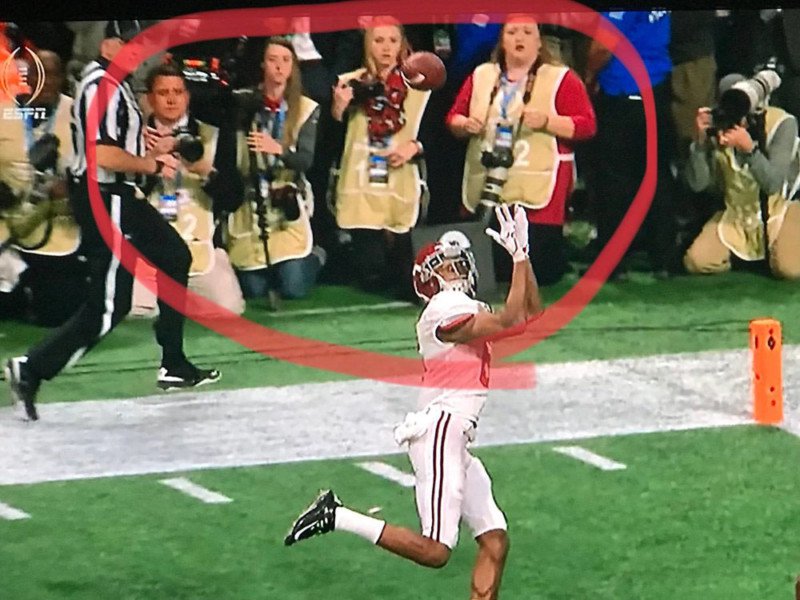 Just in case you missed this viral screen capture from the national championship football game, this is the 42 yard touchdown pass that gave Alabama the victory over Georgia. In other words this is the biggest play of the biggest game of the year. Whoever grabbed this screen capture off their TV circled the sideline photographers. I call this “shock and awe”. Their editors are probably calling this “missed photo”. It is hard to get the shot if your camera isn’t at your face, or even pointed at the play.
Just in case you missed this viral screen capture from the national championship football game, this is the 42 yard touchdown pass that gave Alabama the victory over Georgia. In other words this is the biggest play of the biggest game of the year. Whoever grabbed this screen capture off their TV circled the sideline photographers. I call this “shock and awe”. Their editors are probably calling this “missed photo”. It is hard to get the shot if your camera isn’t at your face, or even pointed at the play.
How To Work With A Model When The Windchill is 4°
You would think a windchill of 4° Fahrenheit (-16°C) would be too cold for a photo shoot, but not with some models. We booked this January shoot weeks in advance so we knew it would be cold, but we had no idea how cold until the day arrived. Here’s the story behind this image and how to work with a model when it is so cold.
Metering People in the Snow
The white snow in a winter scene can and often does fool a camera meter into underexposing a portrait, so here are the steps to take to get the right exposure. I throw in a few portrait suggestions too.
Setting a Custom White Balance Will Save You a Lot of Time
Setting a “Custom White Balance” at the beginning of a photo shoot will save you a lot of time. It will only take a minute or so and can save you a lot of work later on. Think how long it would take you to color correct 250 images.
Posted April 22, 2015. Revised and re-posted Jan. 5, 2018.
Setting the Best White Balance in a Mixed Lighting Situation
A Snowy Owl Photo Expedition
What is a Snowy Owl expedition really like? This article is your chance to find out. Join me for a two day photo safari! I give you tips and photo suggestions along the way, and you get to see how I prepare, plan, and adapt on a photo trip. This is also about what to do when things don’t go according to plan.
Using the Histogram to Check Studio Flash Exposures
When using studio flash units, usually the best way to check your exposures is to use an incident light meter which is capable of metering flash exposures. But what if you don’t have an incident flash meter? Or what if you have a subject that absorbs a lot of light? Or a subject that reflects a lot more light than your typical photographic subject? You can double check your exposure settings by using the histogram on your camera. FYI: Do not trust the LCD image on the back of your camera to judge your exposures.
Environmental Portraits and Off-Camera Flash, Part 3
Off-camera flash can provide more pleasing light and a much more dramatic photograph than on-camera flash. Using two off-camera flash units provides even more dramatic lighting possibilities.
Environmental Portraits and Off-Camera Flash, Part 2
Off-camera flash is so useful because it gives you a different look from the millions of photos that are taken with the flash on the camera. The light can come from any direction you choose, no matter where your camera is, and the latest technology makes automatic flash exposure quick and reliable.

